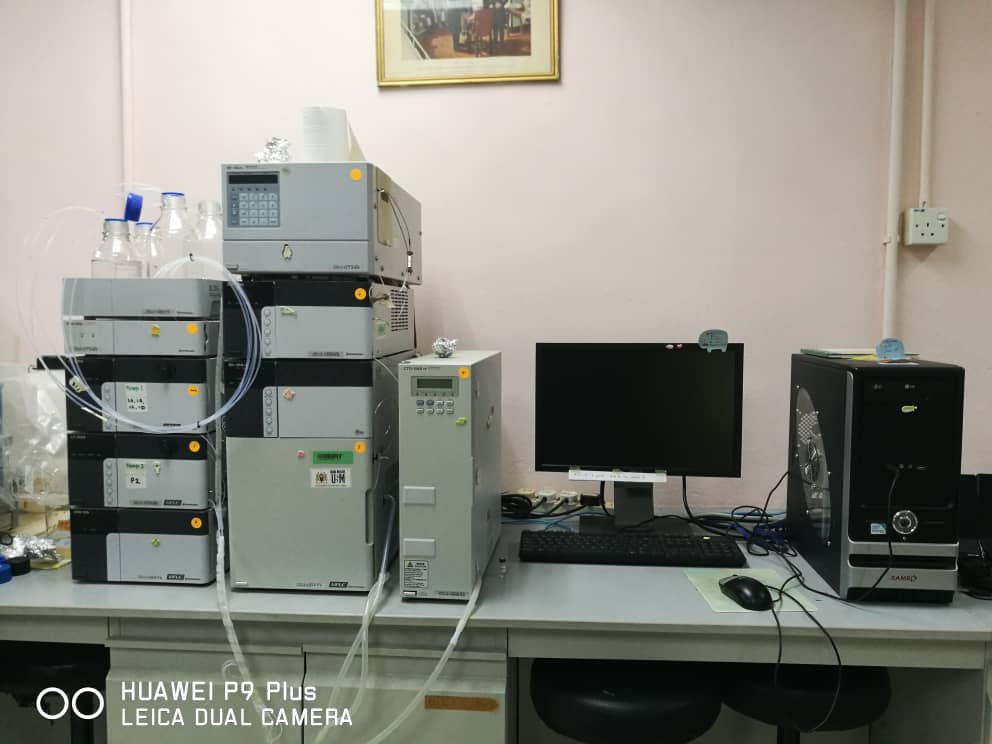


Laboratory Equipment & Services Information System
by Centralized Laboratory Management Office (CeLMO)

HPLC stands for High-Performance Liquid Chromatography. It is a widely used analytical technique in the field of chemistry and biochemistry for separating, identifying, and quantifying compounds in a mixture. HPLC is based on the principle of chromatography, which involves the separation of components in a mixture based on their differential interactions with a stationary phase and a mobile phase. In HPLC, a liquid sample is injected into a column filled with a stationary phase (usually a solid material) that interacts with the sample components to different degrees. A liquid solvent, called the mobile phase, is pumped through the column, causing the sample components to be carried through the column at different rates. As the components elute (come out) of the column, they are detected by a detector, such as UV-Vis spectroscopy or fluorescence, and a chromatogram is produced. HPLC is commonly used in various industries and scientific disciplines, including pharmaceuticals, environmental analysis, food and beverage testing, forensics, and more. It allows for high-resolution separations and is capable of analyzing a wide range of compounds, from small molecules to large biomolecules like proteins and nucleic acids.
HPLC is a versatile and powerful technique that plays a crucial role in modern analytical chemistry and research, allowing scientists to analyze complex mixtures with high precision and sensitivity.
There are several variations of HPLC, including: Reverse-Phase HPLC: In this technique, the stationary phase is non-polar, and the mobile phase is polar. It is widely used for separating non-polar and moderately polar compounds. Normal-Phase HPLC: Here, the stationary phase is polar, and the mobile phase is non-polar. It is used for separating polar compounds. Ion-Exchange HPLC: This method separates compounds based on their charge. The stationary phase contains charged groups that interact with ions in the sample. Size-Exclusion (Gel Filtration) HPLC: Used for separating molecules based on their size. Larger molecules elute first, while smaller ones are retained longer. Affinity Chromatography: Utilizes specific interactions between a target molecule and a ligand immobilized on the stationary phase.
- Manufacturer
- Brand
- Shimadzu
- Model
- L20104715362
- Year Manufactured
- Year Procured
- 2009
- Department
- PUSAT PENGAJIAN SAINS FARMASI
- Location
- Pusat Pengajian Sains Farmasi > Tingkat Bawah
- Date Registered LESIS
- 18/03/2024
- Category
- Research Equipment
- Function
- Category
- Staff operated
- Equipment Status
- Good
Person In-Charge






